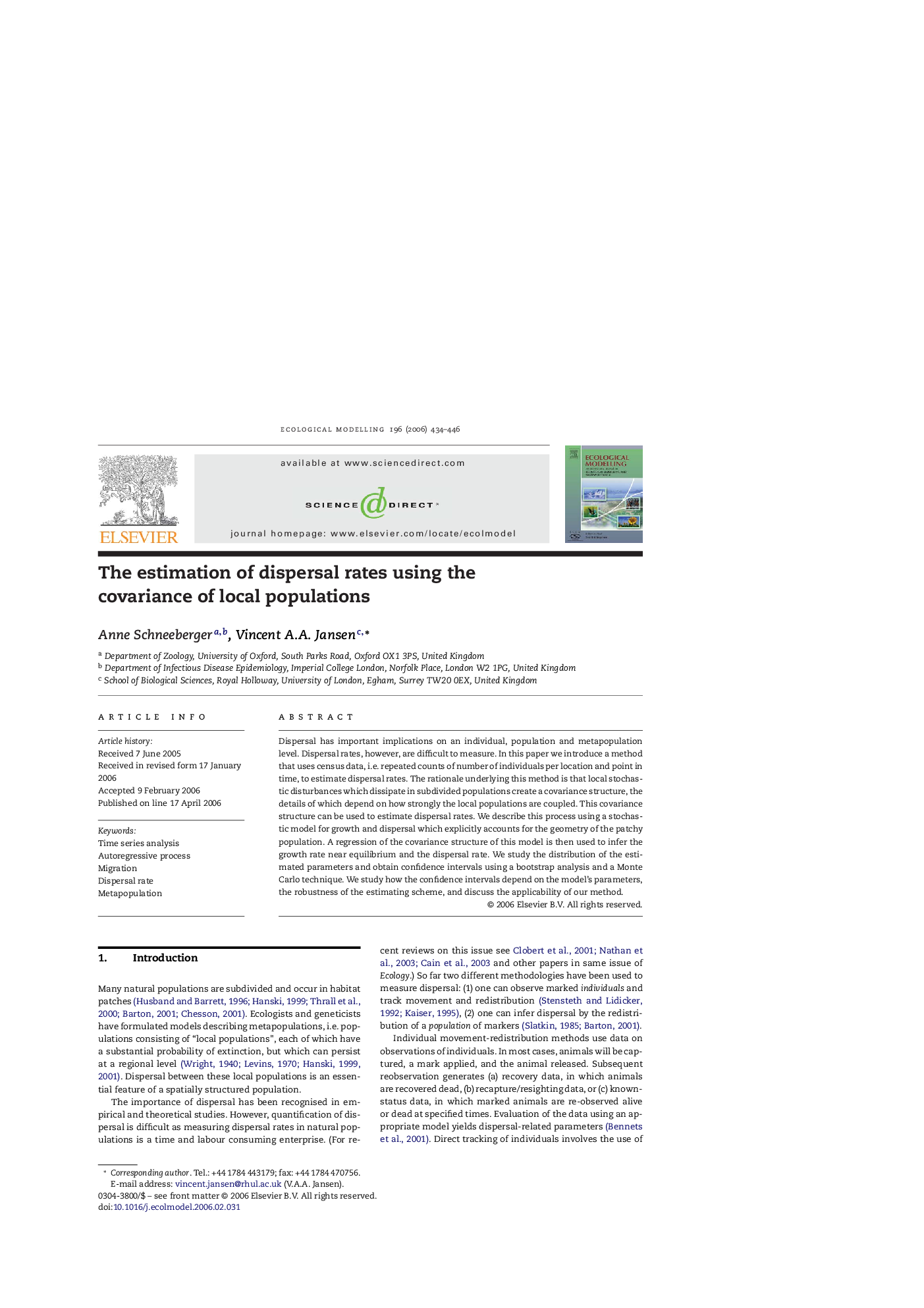| Article ID | Journal | Published Year | Pages | File Type |
|---|---|---|---|---|
| 4379160 | Ecological Modelling | 2006 | 13 Pages |
Dispersal has important implications on an individual, population and metapopulation level. Dispersal rates, however, are difficult to measure. In this paper we introduce a method that uses census data, i.e. repeated counts of number of individuals per location and point in time, to estimate dispersal rates. The rationale underlying this method is that local stochastic disturbances which dissipate in subdivided populations create a covariance structure, the details of which depend on how strongly the local populations are coupled. This covariance structure can be used to estimate dispersal rates. We describe this process using a stochastic model for growth and dispersal which explicitly accounts for the geometry of the patchy population. A regression of the covariance structure of this model is then used to infer the growth rate near equilibrium and the dispersal rate. We study the distribution of the estimated parameters and obtain confidence intervals using a bootstrap analysis and a Monte Carlo technique. We study how the confidence intervals depend on the model’s parameters, the robustness of the estimating scheme, and discuss the applicability of our method.
